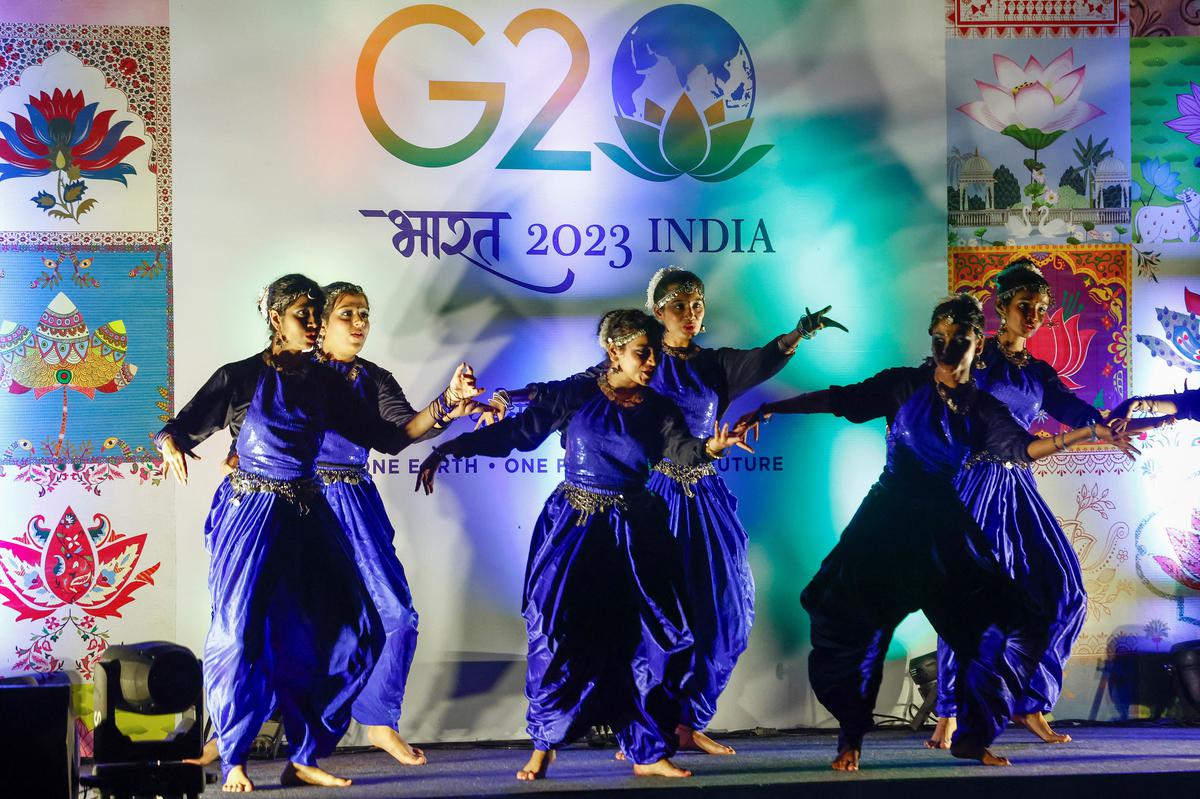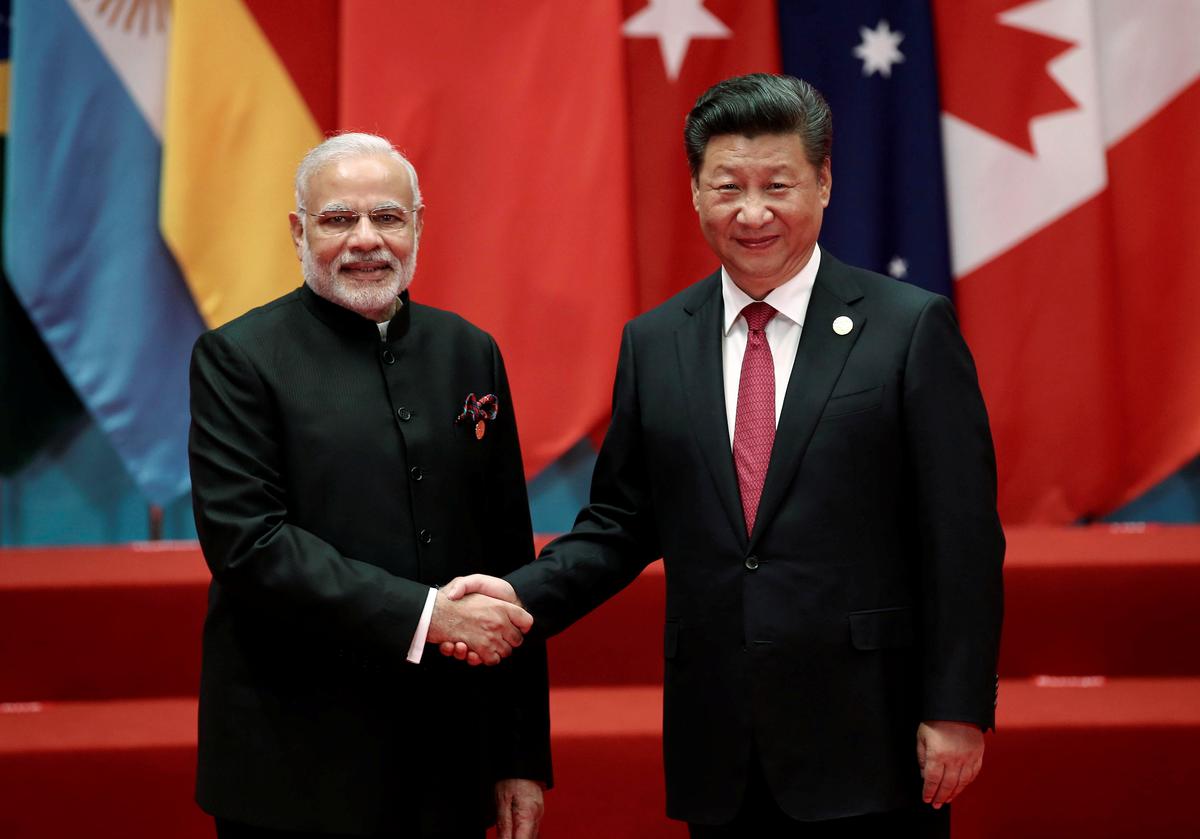This year’s G20 Summit in New Delhi has the motto “One earth, one family, one future.” The theme might have just as easily included “one leader” for the tens of thousands of participants from around the globe who flocked to Bharat Mandapam, the summit site at Pragati Maidan.
Some of the foreign guests inquired whether this was “normal in Indian culture” when they saw Prime Minister Narendra Modi’s face glaring down from posters that had appeared every few dozen yards along the streets of Delhi and gracing all roads leading to Bharat Mandapam. They noted that it is uncommon to see pictures of elected officials outside of government buildings and offices or during elections in both western and Asian democracies.
The New Delhi G-20 Leaders’ Summit on September 9–10 will be remembered for a variety of reasons. It came to a surprising diplomatic conclusion for India, generating the New Delhi Declaration amid a remarkable gulf between the West and the Russia-China axis.

The proclamation, which was rushed in by India’s delegation of negotiators led by Sherpa Amitabh Kant, signaled the rise of the Global South as a significant voice.
The African Union’s admission as the G-20’s newest member, making the 55-nation union only the second regional grouping after the European Union, will be noted in particular for the meeting in New Delhi.
Beyond diplomacy, though, the G-20 will also be recognised for the unusual personalization of what is, in essence, a yearly multilateral meeting of top world leaders. A personalization and politicization of the G-20 that has never been done, including by the host from the previous year, Indonesian President Joko Widodo, who successfully organized a meeting with a declaration and without trumpeting it as a significant political victory.
G20 : The Hangzhou precedent of 2016
Perhaps China and its leader Xi Jinping were responsible for the only other G-20 conference that was similarly politicised. Like everything else in China these days, the Hangzhou meeting was transformed into an homage to Xi by Chinese organisers in 2016. Perhaps reinventing the G-20 blueprint, Hangzhou turned a regular diplomatic transaction into a political showpiece. A good four years prior to COVID-19, China had its first lockdown in the days before that conference. The city was evacuated, blanketed in an unparalleled security net, and people were “encouraged” to take a vacation.
The similarities between Delhi 2024 and real-world Delhi were startling: a closed-off city. Delhi raised the bar for political adoration even by the standards of Hangzhou, where State media coverage focused exclusively on Xi. One curiously visiting European journalist said, “We didn’t even see this in China with Xi Jinping.”
On the G-20 weekend, visitors to the capital were met with the picture of Modi’s face, and Modi alone, which was plastered on hundreds of hoardings and posters around the centre of the city as they made their way from their assigned hotels through Delhi’s desolate streets. Many diplomats noticed that none of the other G-20 heads of state who attended were captured on camera. There would be just one star on the show.
However, the personalization of the G-20 conference went beyond billboards and picture ops. According to officials, Modi showed a keen interest in personally selecting each gift, meal item, and experience for the event’s leaders. For example, the menus featured millets, the grain that India lobbied for at the UN to be designated as the Year of the Millet in 2024, as the Prime Minister is a vegetarian.
At the Presidential Banquet, which was hosted by Droupadi Murmu and at which Modi welcomed the guests, dishes like ‘Foxtail millet leaf crisps topped with yoghurt and spiced chutney’, ‘Kerala red rice tossed with millet crisp and curry leaf’ and ‘a cardamom scented barnyard millet pudding with fig and peach compote’ were all on the menu.
Although it was ultimately only kept in the annexures, the term MAHARISHI, which was reportedly coined by Modi for the Millet and other Ancient Grains International Research Initiative, was included in the G-20 summit declaration. Indian negotiators also succeeded in including other terms that Modi has frequently emphasised in speeches, such as “Vasudhaiva Kutumbakam” and “women-led development.”
The iconic Modi phrase, “Today’s era must not be of war,” from a meeting with Russian President Vladimir Putin in September 2022, is included in Paragraph 14 of the G-20 New Delhi Leaders’ Declaration, which Indian negotiators advocated for in the Bali declaration. Many also drew attention to the G-20 emblem, which features a lotus and is strikingly similar to the election symbol of Modi’s own ruling party, the BJP.

Rewards of personalization
“It’s no secret that Modi and this administration have a recognizable political approach to everything they do. According to professor and journalist Pratap Bhanu Mehta, he has the ability to turn the turning of a tap into a major occasion. For a regime that “so convinced itself of the power of creating a dominant narrative about everything — even the clothes you wear, the language you speak,” he says, this is not unusual. “With the G-20,” he continues, “the scale lends itself to a certain kind of spectacle.”
Making the G-20 about Modi was not without risks, even while the benefits of personalization are evident, especially with a general election looming next year.
Most observers were persuaded in the weeks prior to the summit that the G-20 would fail to reach consensus for the first time in its history due to the stark differences in viewpoints between the West and Russia and China regarding the language used in reference to the war in Ukraine.
It would have also been viewed as a leadership failure to not issue a New Delhi Declaration, especially given the significant political capital invested in the G-20 and its identification with the Prime Minister.
It’s quite difficult to deny that Modi has seen a significant amount of electoral success in that regard, claims Mehta. The main accomplishment here is that he has managed to convey that the rest of the world wants to make an effort to court India, and I believe he will receive domestic credit for it. In any political setting, it will be a big event when every significant political figure stoops to his level to offer him adulation.
And the Modi administration has undoubtedly benefited from this. The Prime Minister interrupting proceedings to declare that, despite all odds, an agreement had been achieved at the last minute was the summit’s most dramatic event.
Soon after, Ministry of External Affairs employees and diplomats were dispatched to emphasize that the Prime Minister’s persuasive and charismatic involvement with other world leaders were the only reason an agreement was reached. Senior government official: “It is a combination of Modi ki guarantee and Modi ka magic.”
Making the G-20 about Modi may have been a high-risk political gambit, particularly in a highly divided world, but it certainly paid off — and brilliantly.













